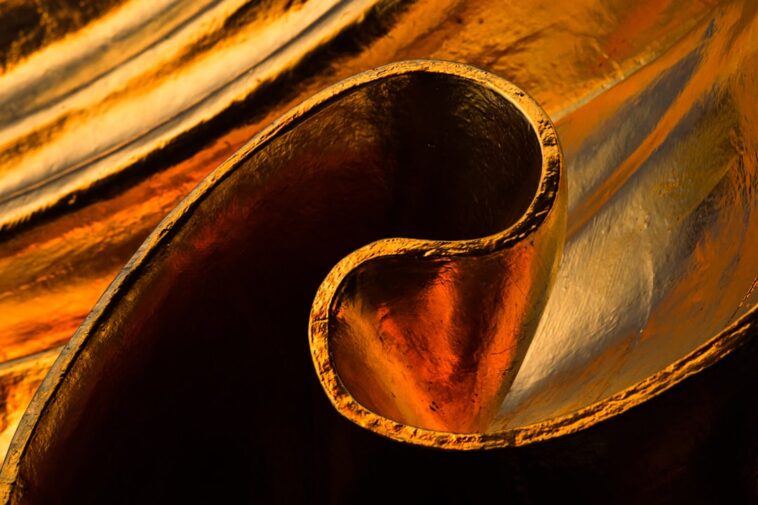Brass, with its warm, golden hue, adds a touch of elegance to any home. From antique doorknobs to decorative figurines, brass items can be beautiful accents. But over time, brass tarnishes, losing its shine and developing a dull, sometimes even greenish, coating. Don’t worry! Cleaning brass is easier than you might think, and you probably already have the supplies you need right in your pantry. Let’s explore some simple and effective methods to restore your brass items to their former glory.
Why Does Brass Tarnish?
Brass is an alloy, a mixture of copper and zinc. When brass is exposed to oxygen and moisture in the air, it undergoes a chemical reaction called oxidation. This process creates a layer of copper oxide on the surface, which we see as tarnish. Factors like humidity, pollutants, and even oils from our skin can accelerate the tarnishing process.
Gather Your Supplies
Before you begin, gather your cleaning supplies. Having everything ready will make the process smoother and more efficient. Here are some common household items you can use to clean brass:
- Soft cloths (microfiber cloths work great)
- Mild dish soap
- Warm water
- Lemon juice
- White vinegar
- Baking soda
- Salt
- Ketchup or tomato paste (yes, really!)
- Toothbrush (old, soft-bristled)
- Gloves (optional, but recommended)
Basic Cleaning Method: Soap and Water
For lightly tarnished brass, a simple soap and water solution is often all you need. This method is gentle and effective for removing everyday dirt and grime.
- Mix a few drops of mild dish soap with warm water in a bowl.
- Dip a soft cloth into the soapy water and gently wipe the brass item.
- Use the toothbrush to get into any nooks and crannies.
- Rinse the brass item thoroughly with clean water.
- Dry the brass item completely with a clean, soft cloth.
Lemon Juice and Baking Soda Paste
For more stubborn tarnish, a paste made from lemon juice and baking soda can work wonders. The acidity of the lemon juice helps to dissolve the tarnish, while the baking soda acts as a mild abrasive to scrub it away.
- In a small bowl, mix equal parts lemon juice and baking soda to form a paste.
- Apply the paste to the tarnished brass, covering the entire surface.
- Let the paste sit for about 30 minutes. For heavily tarnished items, you can let it sit for up to an hour.
- Using a soft cloth or toothbrush, gently scrub the brass item.
- Rinse the brass item thoroughly with clean water.
- Dry the brass item completely with a clean, soft cloth.
Vinegar and Salt Solution
Vinegar and salt is another effective combination for removing tarnish. The vinegar’s acidity works with the salt’s abrasiveness to break down the tarnish.
- Mix equal parts white vinegar and salt in a bowl to form a solution. You can also add a little water to help dissolve the salt.
- Apply the solution to the tarnished brass, ensuring complete coverage.
- Let the solution sit for about 15-30 minutes.
- Scrub the brass item gently with a soft cloth or toothbrush.
- Rinse thoroughly with clean water.
- Dry completely with a clean, soft cloth.
Ketchup or Tomato Paste Trick
Believe it or not, ketchup or tomato paste can be surprisingly effective at cleaning brass! The acids in tomatoes help to break down the tarnish. This is a great option if you’re looking for a simple, readily available solution.
- Apply a thin layer of ketchup or tomato paste to the tarnished brass.
- Let it sit for about 30 minutes to an hour.
- Wipe off the ketchup or tomato paste with a soft cloth.
- Rinse the brass item thoroughly with clean water.
- Dry the brass item completely with a clean, soft cloth.
Important Considerations
Before you start cleaning, it’s crucial to determine whether your item is solid brass or brass-plated. Solid brass can withstand more rigorous cleaning methods, while brass-plated items require a gentler approach to avoid damaging the plating.
How to tell the difference: Solid brass items are typically heavier than brass-plated items. You can also try using a magnet. Brass is not magnetic, so if a magnet sticks to the item, it’s likely brass-plated.
For brass-plated items, stick to the mildest cleaning method (soap and water) to avoid damaging the thin layer of brass.
Always test any cleaning solution on a small, inconspicuous area of the brass item first to ensure it doesn’t cause any discoloration or damage.
Avoid using abrasive cleaners or scrub brushes, as they can scratch the surface of the brass.
Wear gloves to protect your hands from the cleaning solutions and to prevent oils from your skin from transferring to the brass.
Preventing Future Tarnish
Once you’ve cleaned your brass items, you’ll want to keep them looking their best for as long as possible. Here are a few tips to prevent future tarnish:
- Regularly dust your brass items with a soft cloth to remove any surface dirt or grime.
- Avoid touching brass items with your bare hands as much as possible, as oils from your skin can accelerate tarnishing.
- Apply a thin coat of brass polish or lacquer to protect the surface from oxidation.
- Store brass items in a dry, cool place to minimize exposure to moisture and humidity.
Frequently Asked Questions
Can I use brass cleaner on all brass items?
It’s best to test any brass cleaner on a small, hidden area first. Some cleaners can be too harsh for delicate or plated items. Always read the product label carefully and follow the manufacturer’s instructions.
How often should I clean my brass items?
The frequency of cleaning depends on how often the item is used and how exposed it is to the elements. Items that are frequently handled or exposed to humidity may need to be cleaned more often than items that are stored in a dry place.
Is it safe to use these cleaning methods on antique brass?
Antique brass can be more delicate than modern brass. It’s best to use the gentlest cleaning method (soap and water) and avoid harsh chemicals or abrasive cleaners. If you’re unsure, consult a professional antique restorer.
What if my brass item has a protective coating?
If your brass item has a lacquer or other protective coating, you should avoid using any cleaning solutions that could damage the coating. Simply wipe the item with a damp cloth to remove any dust or dirt.
Conclusion
Cleaning brass doesn’t have to be a daunting task. With the right supplies and a little elbow grease, you can easily restore your brass items to their original shine. Whether you choose a simple soap and water solution or a more intensive cleaning method, remember to always test on a small area first and handle your brass items with care. By following these tips, you can keep your brass looking beautiful for years to come!



GIPHY App Key not set. Please check settings